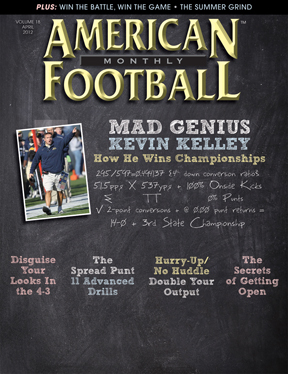Article CategoriesAFM Magazine
|
Advanced Spread Punt Team Drillsby: Tony KehlSpecial Teams Coach Sacramento City College © More from this issue After more than four decades of coaching, I have been exposed to a lot of great information from many outstanding coaches. I have taken ideas and concepts from each source and adapted them to what we do now at Sacramento City College. We are always open to new ideas in our efforts to keep improving. Here are our thoughts on the most critical play in football, the punt, and how we teach its execution. To convey the importance of the punt team, make sure our players understand that a large amount of yardage will be involved and that, along with a change of ball possession, there will be an attempt by the opponent to score. We sell our players on the belief that the result of the punt play will have a positive or negative effect on the momentum of the game. The execution of the punt play can be the difference between winning and....The full article can only be seen by subscribers.
|
|
|||||||
| HOME |
MAGAZINE |
SUBSCRIBE | ONLINE COLUMNISTS | COACHING VIDEOS |
Copyright 2025, AmericanFootballMonthly.com
All Rights Reserved





